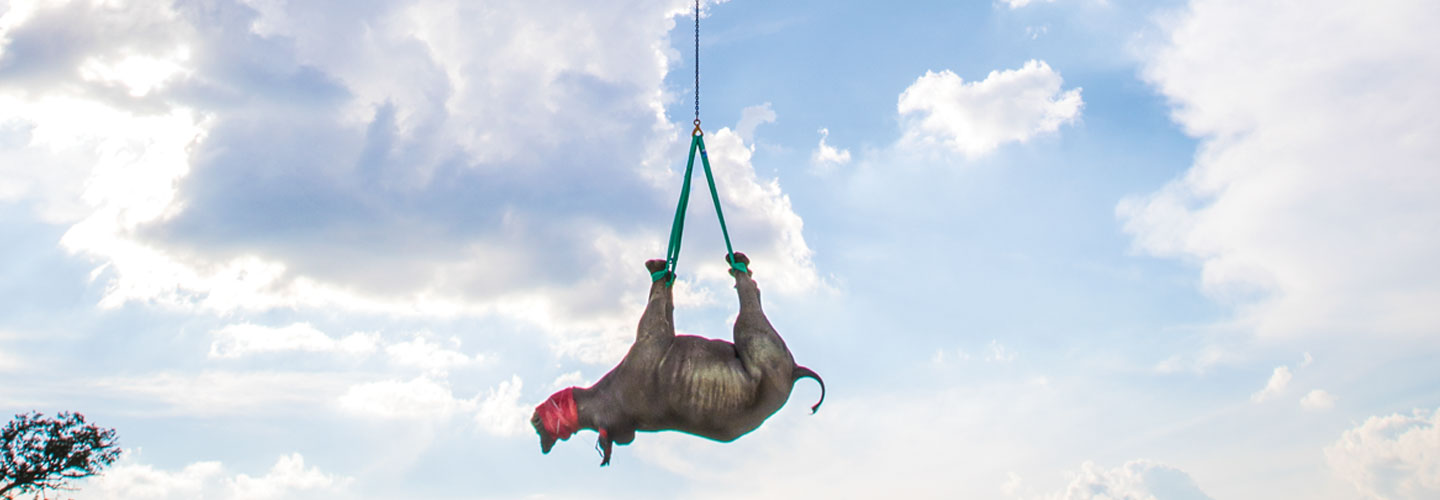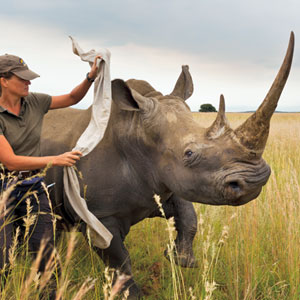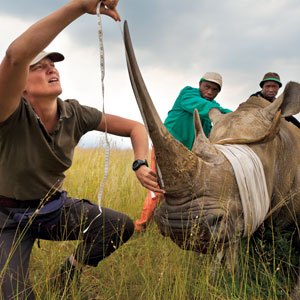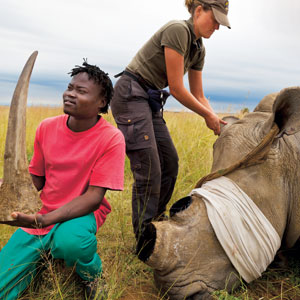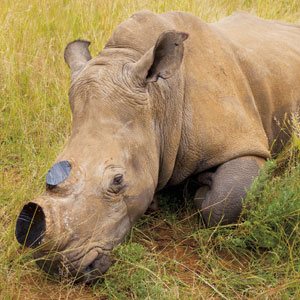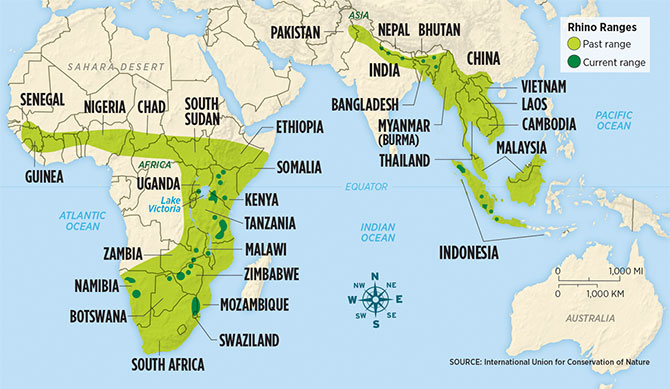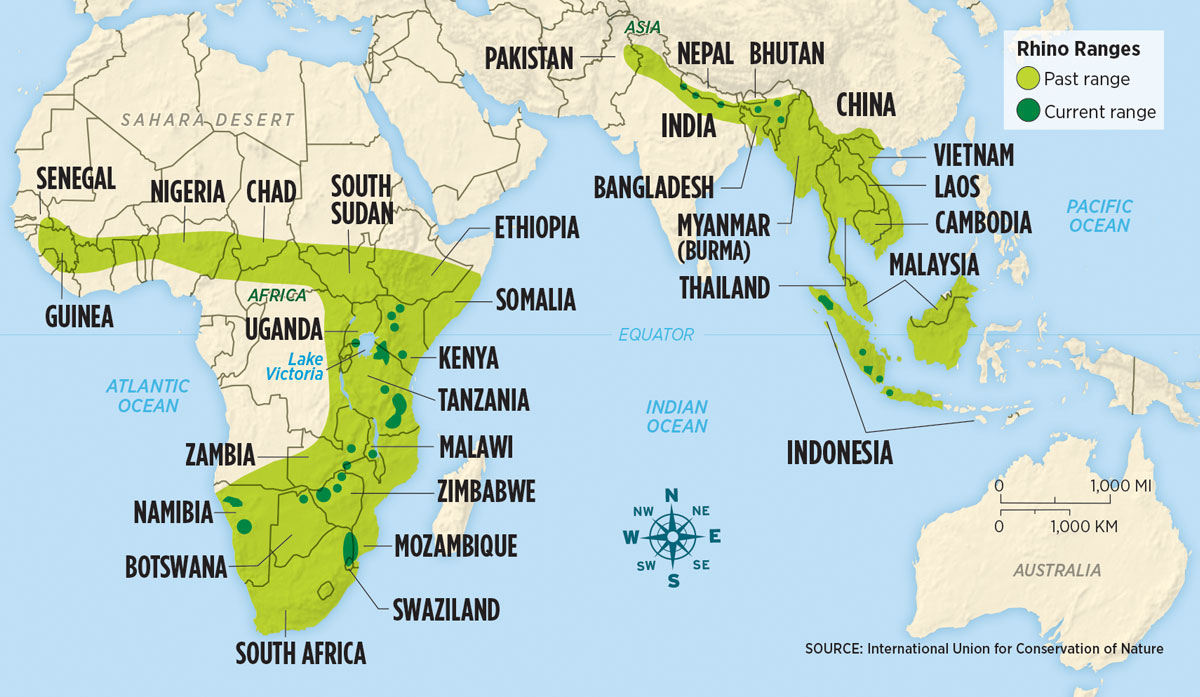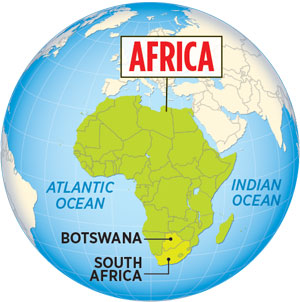
A rhinoceros lumbers across a field in South Africa. Suddenly, a helicopter appears. As the aircraft hovers overhead, the massive mammal breaks into a run—but it isn’t fast enough. A skilled shooter leans out of the helicopter and takes aim. With one shot, he knocks the 4,000-pound animal to the ground.
Illegal hunters kill a rhino every 8.5 hours in South Africa. But this rhino is one of the lucky ones. Groggy but unhurt, it has been hit by a tranquilizer dart and is now in the hands of a conservation group called Rhinos Without Borders.
A team of skilled vets, animal handlers, and armed guards will transport the animal to a secret location in South Africa. Then they’ll carefully fly the rhino to the neighboring country of Botswana and release it into the wild.
Botswana has one of the lowest rates of
At a cost of about $45,000 per rhino, the move is expensive—and extreme. But experts say that if drastic measures aren’t taken, Africa’s rhinos could become extinct within the next decade.
In 2015, poachers wiped out more than 1,300 rhinos across the continent, almost all in South Africa. Poachers kill the animals for their horns, which can fetch tens of thousands of dollars per pound on the
Many people there mistakenly believe rhino horn has healing properties. In reality, the horns are made of keratin, the same material found in human fingernails, and have no medicinal value.
Dereck Joubert, a filmmaker and conservationist who runs Rhinos Without Borders with his wife, Beverly, says that extinction of the rhino would be a crippling blow to Africa’s ecosystem.
“Rhinos play a vitally important role in keeping the ecosystems in Africa alive,” he says. “Letting rhinos go is the start of a slippery slope [toward] letting everything go.”

